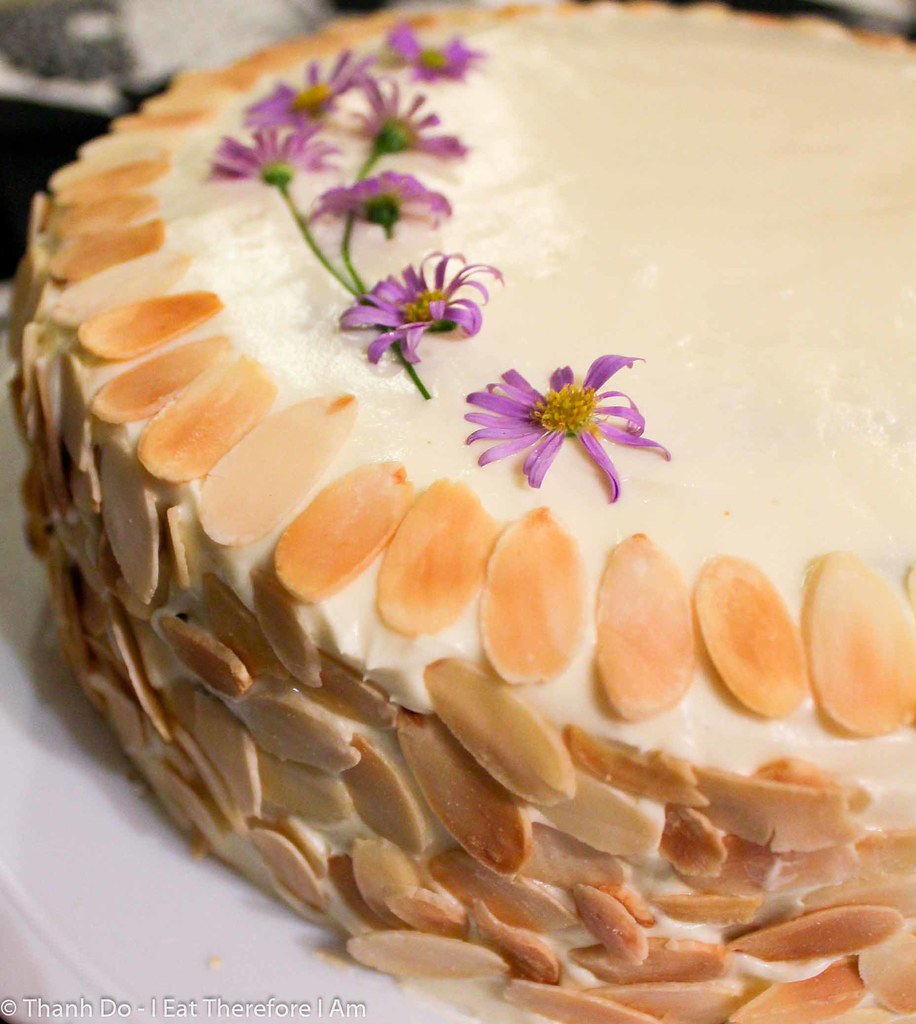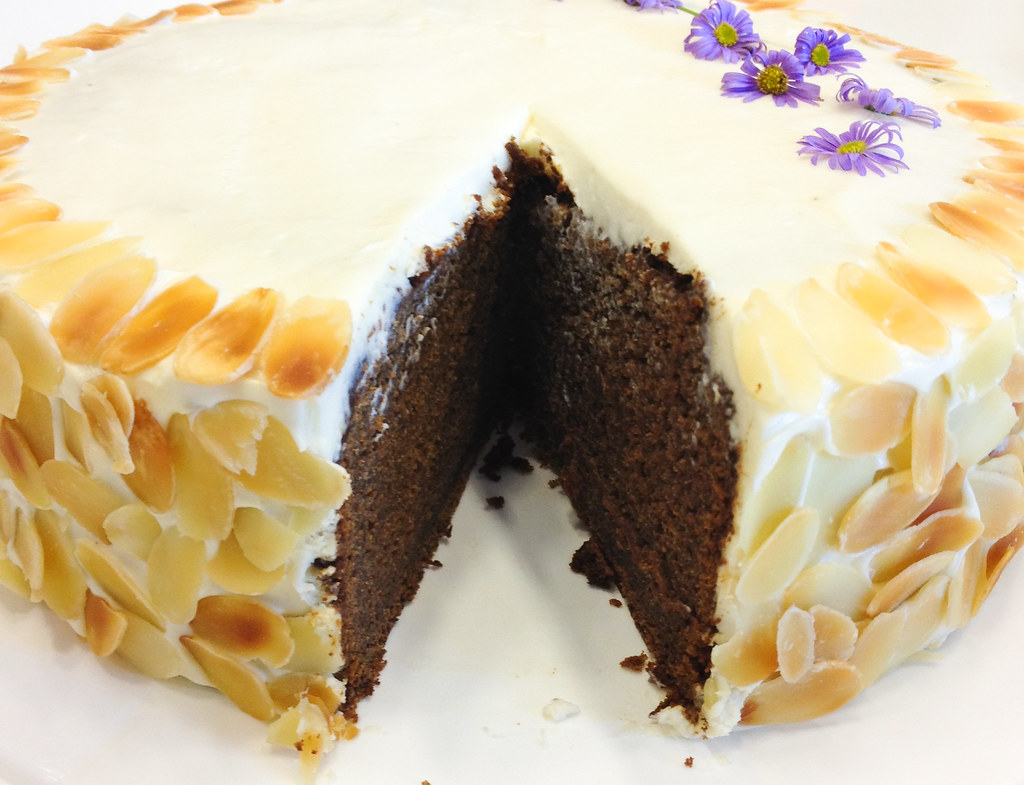So, like most good stories, I need to keep you hooked so let me show you a photo of the final result before I reveal the whole process. Look at my beautiful Gingerbread House. Seriously, I can't stop looking at it every time I walk past as it sits in the centre of my dining room table until after Christmas. The house has character and fun and reflects my baking style, messy.
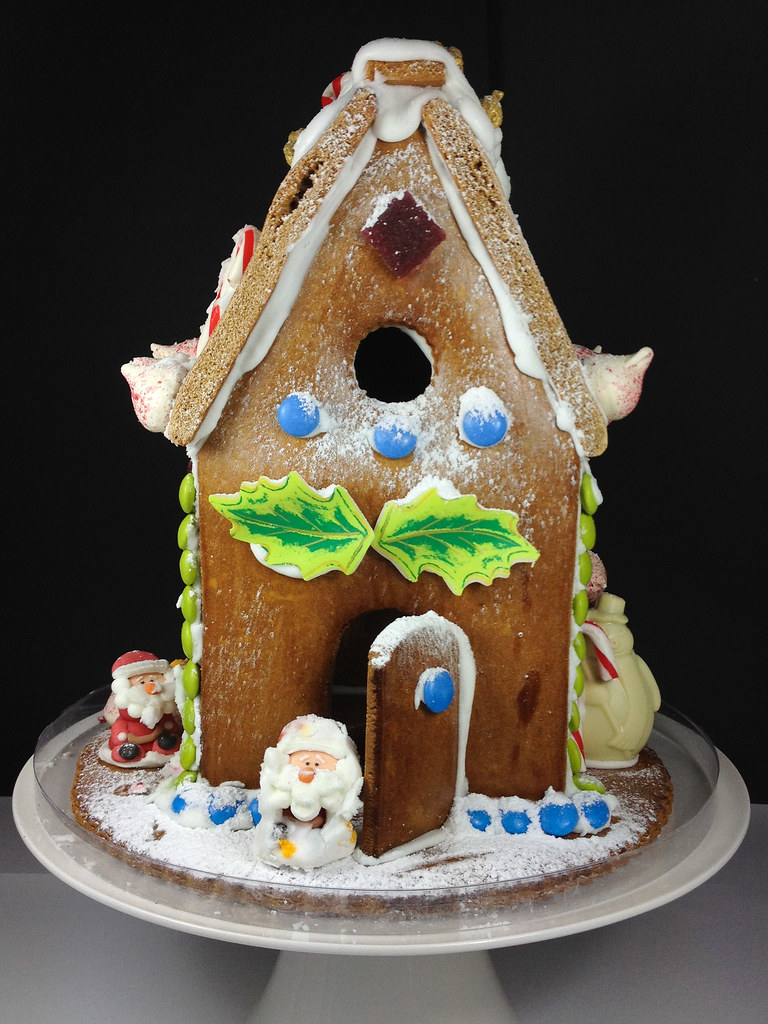
I love many parts of the house but one part which I really love is the gold reindeer poop (as I call it, it's actually gold covered walnuts) on the roof. I think it gives a whole new level of fun.

If we now rewind back to the start, Tim told us about how to make the dough and to bake it and gave us tips. Here are the tips, so take note.
1. Don't overwork the dough when you first mix it. Just mix it enough to make a dough and then put it into the fridge.
2. When you go to knead the dough, you can mix it as hard as you want as this recipe doesn't harden when you knead too much.
3. When baking it, always underbake. If it looks like it's not quite ready yet, it probably is ready. It tends to harden up really badly if you overbake and it won't be enjoyable to eat. If you are purely making it for decorative purposes, you can bake it more.
4. Freshly ground spices work best as the aroma is much stronger. Make your own mix and be creative. Tim used many things including tea, anise, cinnamon etc.
5. Make a template to cut out your house and do a trial run with the template to ensure it all fits together properly. Don't freestyle if you're a beginner and try to cut the dough on the fly if you want a neat looking house. If you don't mind your house looking like a half finished product from Grand Designs, by all means freestyle.
6. This is the most important tip. You can never ever overdecorate a Gingerbread House. The more stuff you throw on it, the better it looks. So go mad and find as many things as you can to put onto it and have heaps of fun.
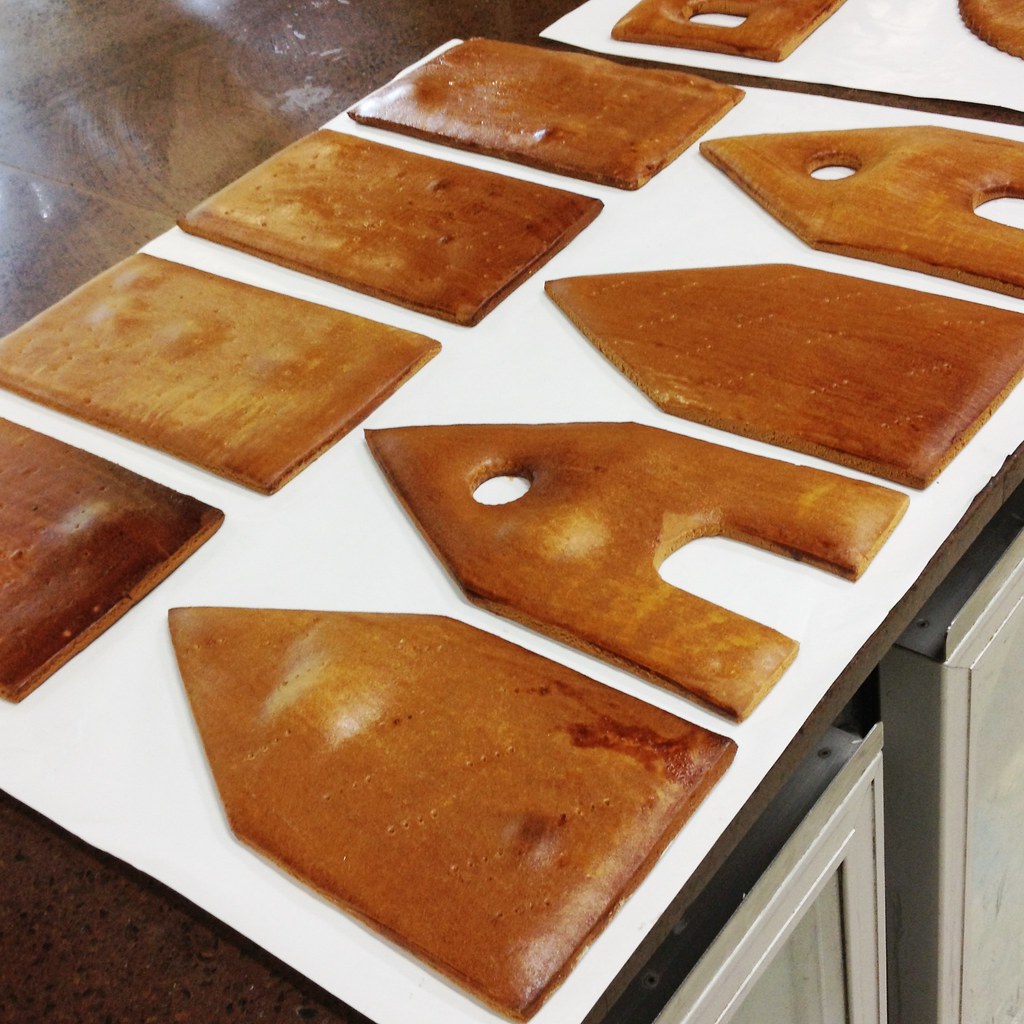
Look at my Santa peeking out of the window. Unfortunately Santa was too fat and the royal icing did not hold him and he fell to the bottom of the house and broke a leg and now is walking in crutches.
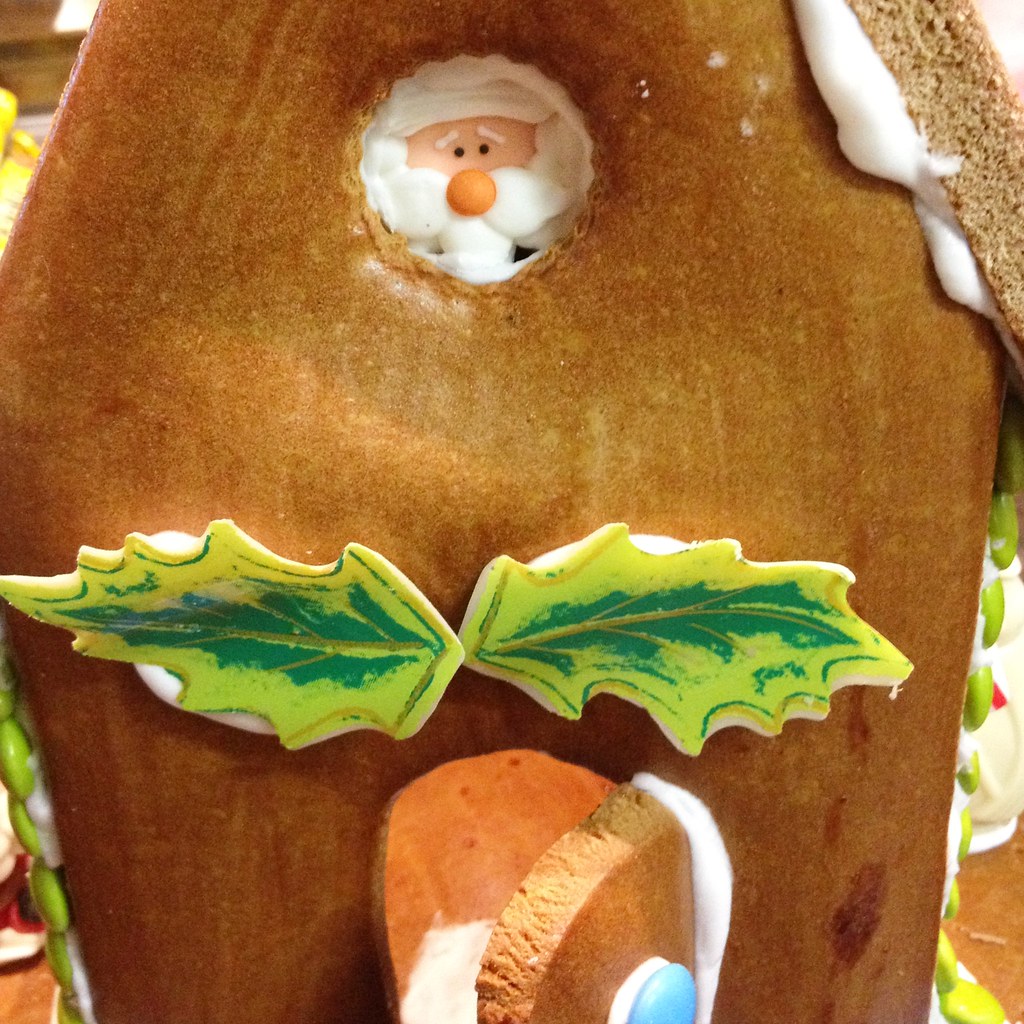
Michele made the cutest door reindeer reef. I'm totally stealing this idea for next time.
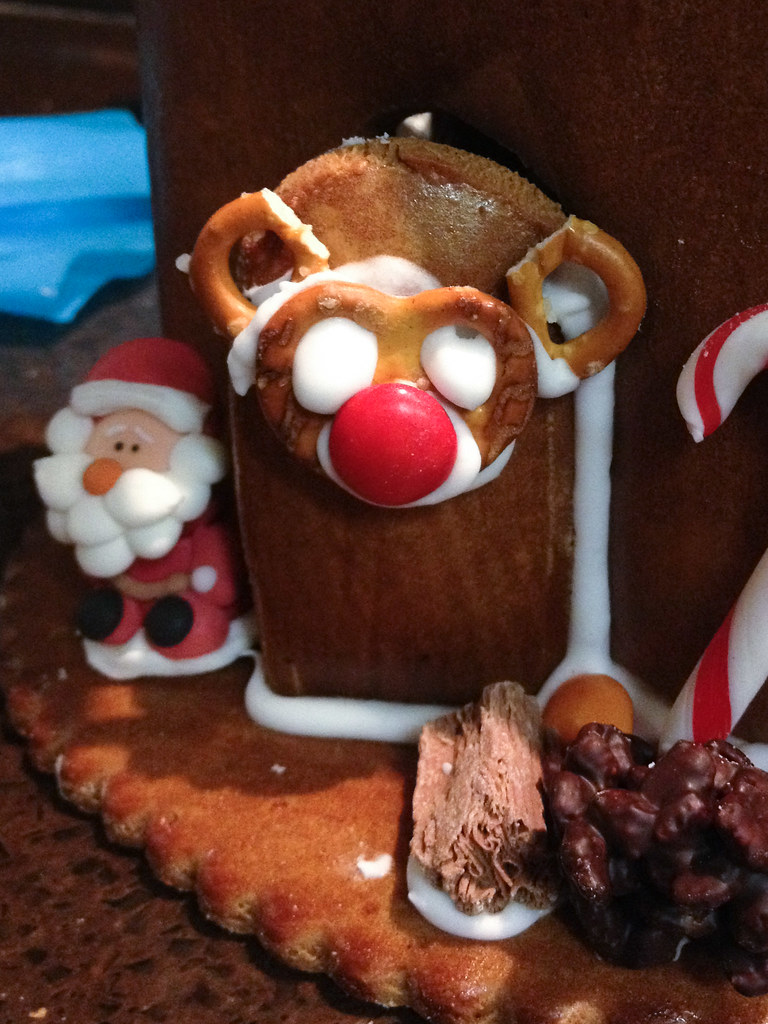
We both finished our houses and were extremely pleased with them. Michele's is on the left and mine's on the rights. Who's cuisine, I mean Gingerbread House, reigns SUPREME????????? Just because Michele's blog is called Iron Chef Shellie doesn't mean that I will lose this battle. I will fight for the honour of my baking tribe, the Geeky Engineer's Baking Society of Melbourne and win this contest. Please vote in the comments below. If you vote 1 for Thanh Do, you're voting for more stroopwafels and banana bread for all.
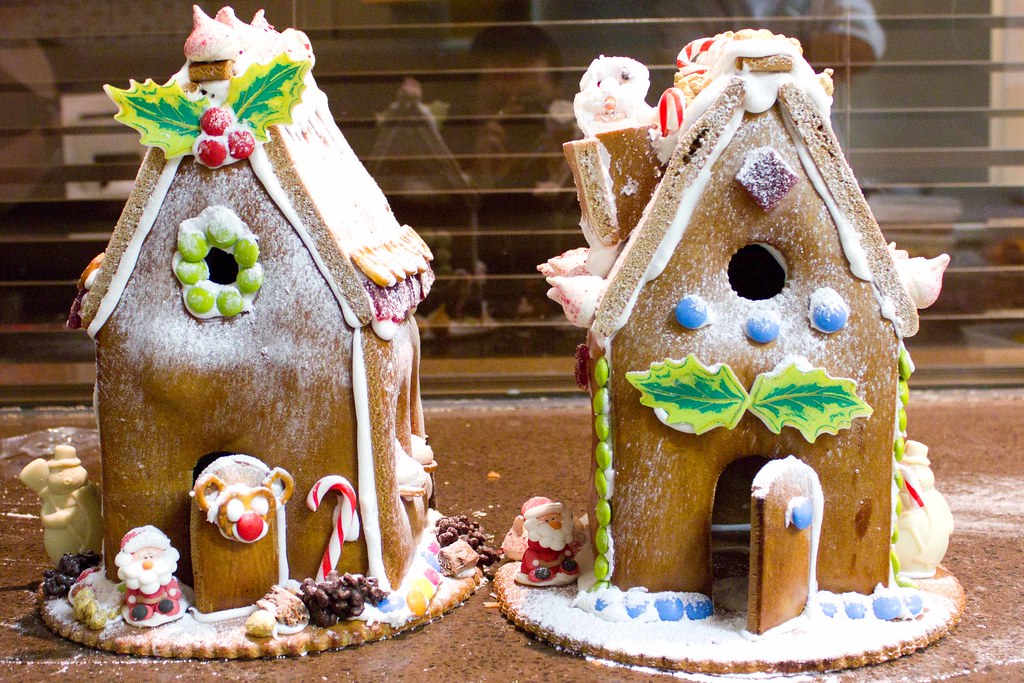
Whilst our Gingerbread Houses are awesome, unfortunately you can't have them. You can get the next best thing, which is a Gingerbread House from Cacao for this Christmas. They're nice, but obviously nowhere as nice as mine. :-)

While we waited for our icing to set, we tucked into some macarons. I know that Cacao does macarons but for whatever reason, I've never come to buy them before. I've bought their chocolates but not the macarons. Utter total incomprehensible monumental failure on my part. The macarons are delicious. On the night we sampled the Violet and Blackcurrant and Jingle Bells. I'm obsessed with violet flavours in desserts and have been trying to hunt down the essence everywhere for a while now. Well, I may have found a secret supplier in Tim (hint hint Tim). Violet is so under-utilised in desserts in Melbourne. The French use it in a lot of their cakes and it works wonderfully. This macaron was no exception as it combined perfectly with the blackcurrant. Violet tastes less floral (and less like toilet freshener) compared to lavender, which I don't like too much. The Jingle Bell macaron is a special for Christmas and contains crushed-up Christmas pudding with rum toffee in a vanilla buttercream. Yummo. Tastes so Christmassy (not a real word, put down your keyboards word Nazis).

We also got the pleasure of taking home a big box of Cacao macarons. So far I've eaten two, the Strawberry and Cream (simple and delicious) and the Pistachio (OMFG awesome). The pistachio is the best I've tasted anywhere in Melbourne. The flavours are so true to pistachio and you can taste the nuts rather than that faux flavour which I hate.
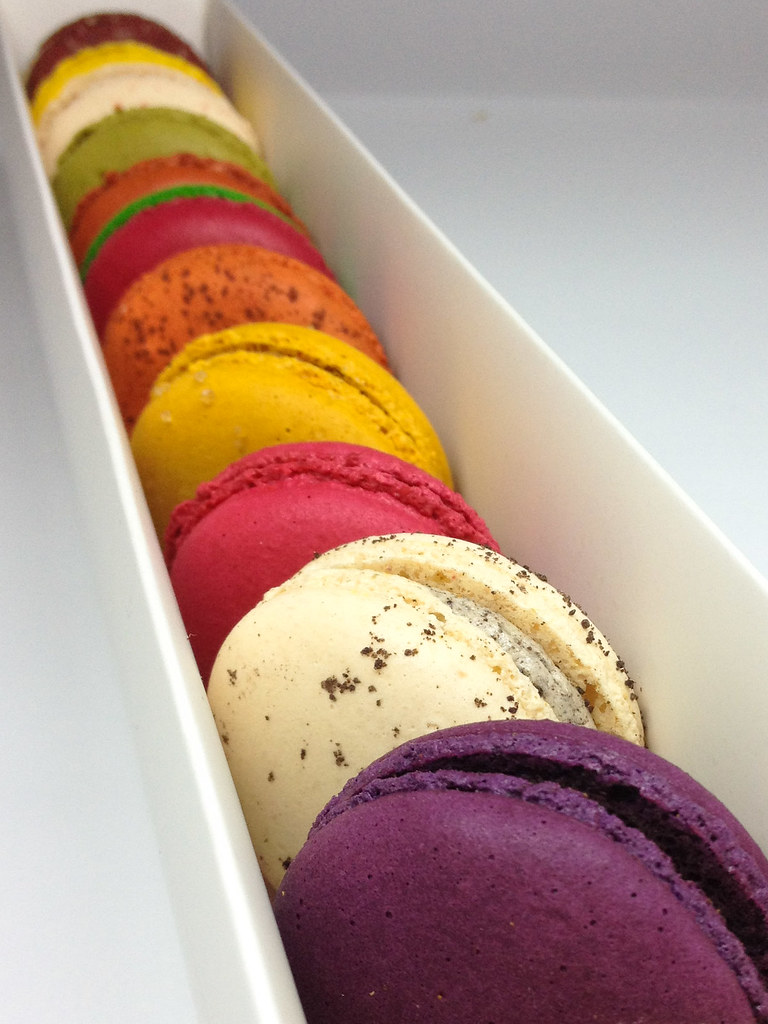
Lastly, we also got a jar of the Salted Caramel Spread. I've made my own Salted Caramel Spread (recipe to come in a separate blog post) as it's all the rage nowadays. My salted caramel spread is rather awesome already (photo below), but Cacao take their salted caramel spread to another level. They use fleur de sel instead of regular salt and add some chocolate into the mix, giving it a richness and extra fragrance my spread doesn't have. Looks like I need to experiment with my salted caramel to raise it to another level.

That my friends, concludes a very enjoyable journey into various Christmas treats. Obviously, there aren't many days left to Christmas, so you better haul a$$ to Cacao to stock up on the really important items like chocolates, macarons, gingerbread houses and that salted caramel spread. What's Christmas going to be like at your house without these essentials eh, a sad boring party of nothingness (unsure if that's a real word, please confirm). I will be eating my delicious treats and Instagramming it for you to see otherwise muahahaha (evil dictator laugh).
Gingerbread Recipe
This recipe has been kindly given by Tim Clark from Cacao. It should be enough to make a fairly decent sized house.
INGREDIENTS
Water 30g
Sugar 75g
Honey 50g
Glucose 25g
Golden Syrup 25g
Flour 300g
Baking Powder 5g
Baking Soda 2g
freshly ground mixed spice 5g
Eggs 40g
METHOD
1. Warm the Water, Sugar, Honey, Glucose and Golden Syrup in a sauecepan
2. Add the warm liquid with the eggs and whisk to combine and add to the dry ingredients and mix well until mixture forms a dough either by hand or with a mixer fitted with a paddle or dough hook.
3. Cover dough and let rest in the fridge for 24hrs
4. Next day roll the Gingerbread out to 4mm in thickness and cut to desired shapes
5. Let rest for 30 minutes before brushing wish egg yolk
6. Bake in oven @ 180C for 12 to 14 min.
7. Decorate to your heart's desire.

